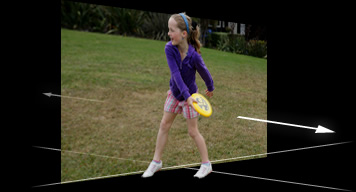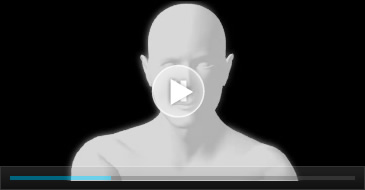
World’s first
Double Full HD 3D Consumer Camcorder
Shot with two lenses and processed with two image processors
Driven by not one but two Wide Angle Sony G Lenses, two "Exmor R" CMOS sensors, and two powerful "BIONZ" image processors, HDR-TD10 is able to shoot 3D images in Double Full HD. You can enjoy 3D images in Full HD quality just as you can with conventional 2D Handycam® HD camcorders.

Double "BIONZ" Image Processors
Double "Exmor R" CMOS Sensors
Double Sony Lens G
"Frame packing" method to achieve Full HD quality
A commonly used signaling specification in most 3D products, the side-by-side method squeezes both the left and right image by half, resulting in some inevitable loss of image quality.
On the other hand, by employing the "frame packing" 3D signaling method, HDR-TD10 is able to produce Full HD 3D images without sacrificing image quality, as both the left and right frames are transferred via HDMI as Full HD signals without being squeezed by half.

HDR-TD10
Frame Packing Quality (simulated)
Side-by-side Quality (simulated)
"Frame packing" method
"Side by Side" method
Shoot in 3D, watch in both 3D and 2D
Simply shoot in 3D, and have a choice to watch in 3D or 2D later, both in Full HD quality. When HDR-TD10 is connected to a 2D HDTV, only one of the channels of the 3D video will be displayed automatically, without the need to manually switch from 3D to 2D on the camcorder. (Refer to How 3D imaging works for 3D mechanism)
The beauty of our Double Full HD system is that even if you don’t have a 3D TV yet, you can shoot in 3D first, and still be able to enjoy the videos you have shot in Full HD 2D now, and in Full HD 3D in the future when you buy a 3D TV.

Optimum distance
between lenses to produce
the optimum stereoscopic effect
One of the most important characteristics in a 3D camera is the amount of stereoscopic effect a camera can produce. And this quality is directly related to the distance between the lenses in a twin lens 3D system.
Based on our rich experience in both 3D imagery and camcorder technology, for HDR-TD10, a distance of 31mm between the lenses is chosen for optimum performance. This distance enables the best stereoscopic effect without sacrificing the basic operability, allowing you to shoot great 3D images in various scenes, zooming in and out freely.

How 3D imaging works
3D image = 3-dimensional image, or stereography
Expressing reality and presence
Conventional TV could display objects in 2D (2 ?dimensional image) only. So it is impossible to express the natural depth and presence they have in the real world.
In contrast, 3-dimensional (3-D) imaging applies the knowledge that humans see things with two eyes that are set slightly apart, to reproduce a sense of depth In addition to horizontal and vertical information. 3D more closely resembles the way people sense space, creating a new way of visual expressions.


Sense of depth resulting from parallax
Because there is separation between the eyes in humans, each eye sees the world from a different angle. If you cover one eye, and then alternately the other, you will see things differently each time - and can perceive the difference in angle.
A combination of the individual images seen by each eye creates a perception of depth and dimension in the brain. This is called "parallax", and it is the base on which 3D imaging technologies were created.
3D shooting uses parallax
When shooting a 3D image, two lenses are used to capture separate images of the same object from different angles. Containing twice as much information as conventional 2D images, 3D images are then edited while maintaining the information from both angles.
When the medium is played back, the left-hand image is shown only to your left eye and the right-hand image only to your right eye. These two images combine in your brain to give you a perception of depth.

